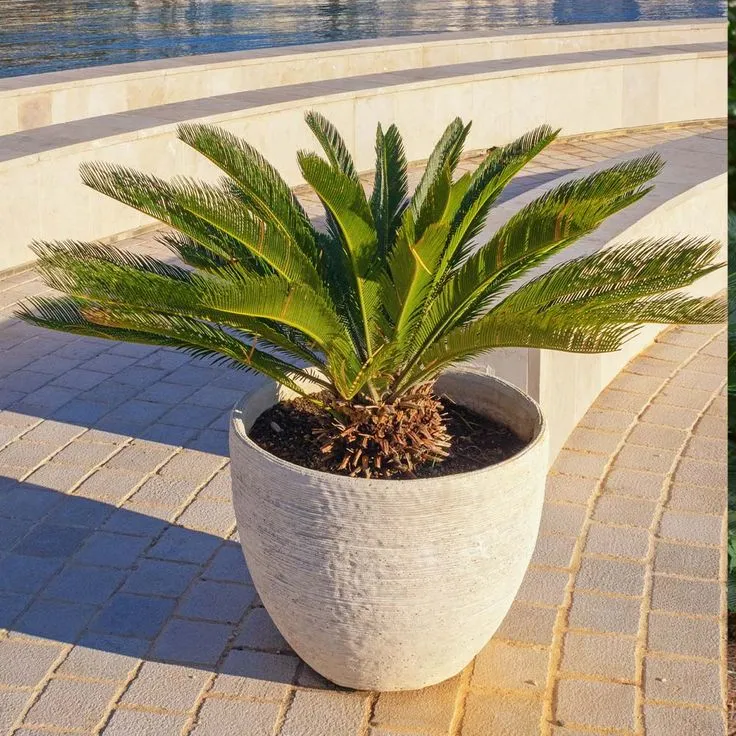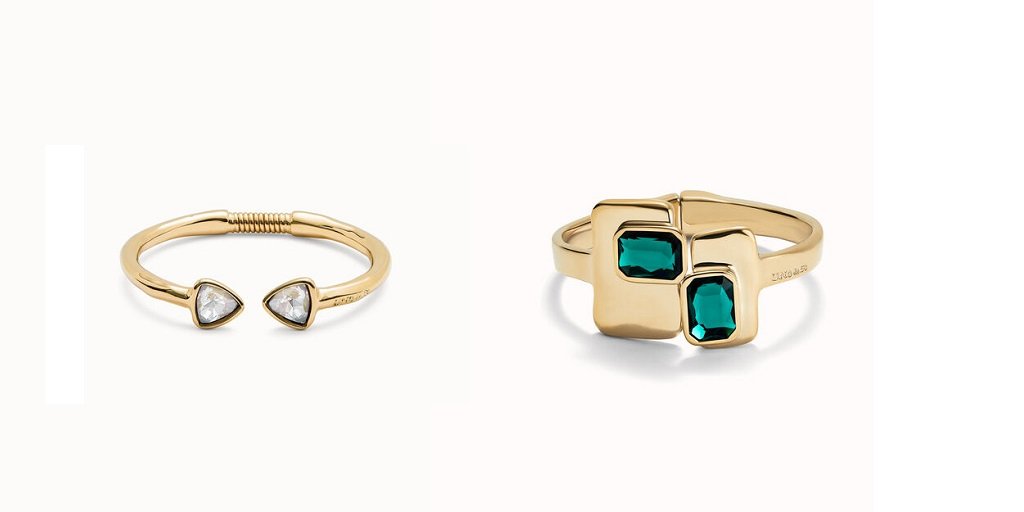The Incredible Benefits of Sago Palm (Cycas revoluta)
The Sago Palm (Cycas revoluta), despite its name, is not a true palm but a member of the ancient Cycad family. With its attractive, feathery fronds and tropical appeal, it is a popular ornamental plant around the world. While often appreciated for its visual appeal, the Sago Palm also offers a range of environmental, economic, and cultural benefits. In this comprehensive guide, we will explore the diverse advantages of Sago Palm, ranging from landscaping and air purification to its historical uses and cultural significance.
The Sago Palm, or Cycas revoluta, is far more than just a visually appealing plant.
1. Ornamental and Landscaping Value
One of the primary benefits of the Sago Palm is its immense value as an ornamental plant.
a. Aesthetic Appeal
The Sago Palm boasts symmetrical, stiff, dark-green fronds that radiate from a central trunk. Its distinctive tropical look makes it a favorite in landscaping for residential gardens, public parks, and commercial properties.
b. Versatile Use in Garden Design
This plant suits various garden styles—whether tropical, desert, Japanese, or contemporary themes. It works well as a centerpiece in planters, an accent in borders, or a decorative indoor plant.
c. Compact Growth
Its slow-growing nature means it requires minimal pruning and maintenance, making it ideal for homeowners who want a low-maintenance yet striking garden plant.
2. Air Purification and Environmental Benefits
Sago Palms contribute positively to the environment in several ways.
a. Natural Air Purifier
Like many indoor plants, Sago Palm helps clean the air by removing harmful pollutants. It absorbs carbon dioxide and releases oxygen, thus contributing to better indoor air quality.
b. Dust Reduction
Its large fronds can trap dust particles, which helps reduce dust levels indoors or near walkways.
c. Soil Stabilization
Sago Palms, with their sturdy root systems, help in soil stabilization and prevent erosion, especially in sloped landscapes.
3. Adaptability and Resilience
One of the reasons for the Sago Palm’s popularity is its resilience.
a. Drought Tolerance
Once established, Sago Palm is highly drought-tolerant. This makes it ideal for xeriscaping and regions prone to water shortages.
b. Pest Resistance
Sago Palms are naturally resistant to many pests and diseases, reducing the need for chemical treatments.
c. Survives Harsh Conditions
It can survive in various environmental conditions, including poor soil, heat, humidity, and partial shade. It also does well in pots, containers, or ground planting.
4. Cultural and Historical Significance
Sago Palm has been revered in many cultures for centuries.
a. Symbol of Longevity
In East Asian cultures, especially Japan and China, the Sago Palm symbolizes endurance, strength, and longevity. It’s often planted in temples and gardens for good fortune.
b. Historical Usage
In ancient times, it was cultivated not just for its looks but also for its potential as a source of food and medicinal uses (though caution is needed—see the note on toxicity below).
5. Potential Economic Benefits
Sago Palm is valuable in the nursery and landscaping industry.
a. Commercial Sales
It is widely cultivated and sold in nurseries around the world. Mature specimens fetch high prices due to their slow growth and elegant appearance.
b. Landscape Contracting
Landscape designers and contractors use Sago Palms to add high-value aesthetics to luxury gardens, resorts, and hotel landscapes, boosting real estate value.
6. Educational and Scientific Importance
The Sago Palm has educational value in schools, universities, and botanical gardens.
a. Botanical Studies
As one of the most primitive living seed plants, it is used in botanical and evolutionary studies. Its structure and reproduction are studied in plant biology.
b. Paleobotanical Relevance
Cycads like Sago Palms are considered “living fossils” and offer insight into prehistoric plant life, making them essential for scientific research.
7. Indoor Planting Benefits
Sago Palms can thrive indoors under the right conditions and offer several indoor benefits.
a. Interior Decoration
The plant adds an exotic, luxurious feel to homes, offices, and commercial interiors.
b. Low Maintenance
As an indoor plant, it requires minimal watering and fertilization, making it perfect for busy lifestyles.
c. Long Lifespan
A Sago Palm can live for decades, becoming a treasured feature in any home.
8. Propagation and Gift Potential
a. Easy to Propagate
Sago Palms produce pups (small offshoots) at the base that can be separated and replanted, making them easy to propagate and share.
b. Gift Plant
Due to its symbolic meaning of perseverance and endurance, Sago Palm is considered a thoughtful gift for housewarmings, weddings, and milestone celebrations.
Note:The Sago Palm, or Cycas revoluta, is far more than just a visually appealing plant.
9. Use in Bonsai and Container Gardening
Sago Palm’s form makes it an excellent candidate for container gardening and bonsai.
a. Bonsai Form
Its symmetrical structure and slow growth make it ideal for bonsai-style cultivation.
b. Container Planting
It thrives in pots, allowing flexibility in placement—balconies, patios, entrances, or indoor corners.
10. Wildlife Habitat and Shelter
a. Microhabitat
In outdoor gardens, Sago Palms provide microhabitats for insects and small reptiles, which help maintain a healthy ecosystem.
b. Pollinator Attraction
Though not flowering in the traditional sense, male and female cones attract certain insects and beetles during pollination.
11. Craft and Decorative Uses
While not commonly used in crafts, Sago Palm parts have been employed in decorative arrangements.
a. Dried Fronds
Fronds can be dried and used in artistic arrangements or seasonal décor.
b. Tropical Themes
Artificial or preserved Sago Palm leaves are often used in tropical-themed events and interior design.
12. Traditional and Medicinal Use (with Caution)
Historically, the Sago Palm has been used in traditional medicine and as a food source after extensive processing.
a. Sago Starch
In some parts of Asia and the Pacific Islands, the trunk of related Sago palms (especially Metroxylon sagu, not Cycas revoluta) is processed to extract sago starch—a source of carbohydrates.
b. Caution: Toxic Parts
It is essential to note that Cycas revoluta is highly toxic if consumed without proper processing. All parts, especially seeds, contain cycasin, which can cause liver damage and neurological issues. It should never be consumed without expert preparation.
13. Low Water Gardening and Sustainability
Sago Palms align with sustainable gardening practices.
a. Eco-Friendly
Due to their low water needs and minimal pesticide requirements, they are considered an eco-friendly landscaping choice.
b. Drought-Resistant Landscaping
Used in xeriscaping, they help conserve water and reduce environmental footprint.
14. Psychological and Well-being Benefits
Plants contribute positively to mental health, and Sago Palm is no exception.
a. Stress Reduction
The presence of plants like Sago Palm has been shown to reduce stress, anxiety, and fatigue in indoor environments.
b. Improved Focus and Productivity
Indoor plants help improve concentration, especially in workspaces or study areas. Sago Palm’s symmetrical and soothing green appearance enhances this effect.
15. Symbol of Prestige and Sophistication
In modern landscaping and interior design, the Sago Palm is often associated with luxury and taste.
a. Luxury Landscaping
High-end homes, resorts, and golf courses often feature Sago Palms to enhance visual appeal and prestige.
b. Architectural Appeal
The plant’s sculptural shape adds architectural interest to both minimalist and lavish designs.
Conclusion
The Sago Palm, or Cycas revoluta, is far more than just a visually appealing plant. It offers a multitude of benefits—environmental, economic, cultural, and emotional. Whether you’re looking to enhance your garden’s beauty, create a sustainable landscape, decorate your indoor space, or simply enjoy the calming presence of greenery, the Sago Palm is an excellent choice. However, care must be taken due to its toxic parts, particularly around pets and children.
Its low-maintenance nature, resilience to harsh climates, and versatile use in modern and traditional settings make it a truly remarkable plant. As more people turn toward sustainable and decorative landscaping, the Sago Palm continues to rise in popularity—rightfully earning its place as a timeless botanical treasure.
Let me know if you’d like this content formatted for a blog post, social media, or SEO optimization!











Leave a Reply